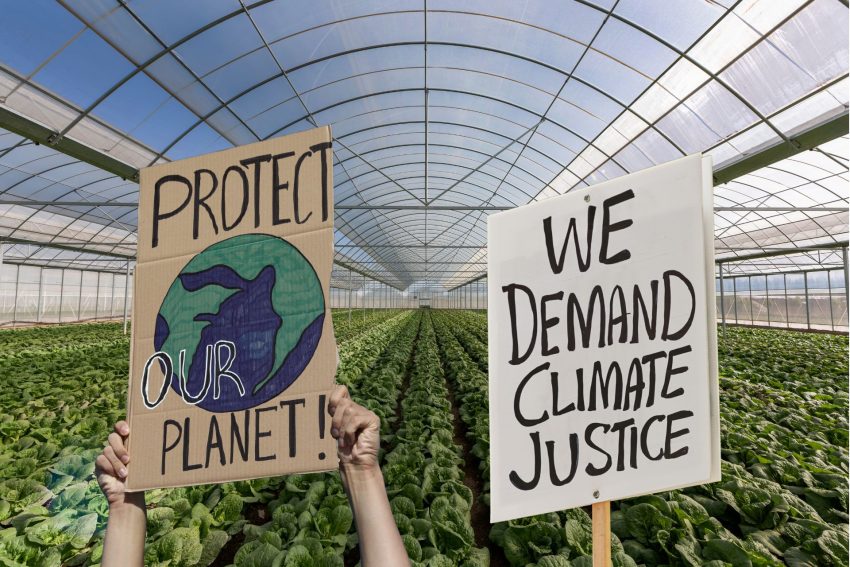Farmers, let’s talk plain sense. You’re out there every day, working the land, coaxing life from soil, and battling weather to feed the world. So when someone tells you that “greenhouse gases” like CO2 are the enemy, you’ve got every right to raise an eyebrow. This isn’t just some abstract policy debate—it’s an attack on the very conditions that make your crops thrive. The idea that we’re supposed to fight a war against CO2, a gas you literally pay to pump into greenhouses to boost plant growth, is not just misguided. It’s downright insane.
Let’s start with the obvious: CO2 is plant food. In greenhouses, you crank up CO2 levels—sometimes to 1,000 ppm or more, way higher than the atmosphere’s current 420 ppm—because it makes plants grow faster, stronger, and more resilient. It’s not cheap, either. You shell out for CO2 generators or tanks because the science is clear: more CO2 means bigger yields, lusher crops, and better resistance to stress. So why on earth are we being told that CO2 in the atmosphere is a villain? The same gas that fuels tomatoes, peppers, and wheat is now public enemy number one? That’s not science—it’s propaganda.
And it’s not just CO2 getting a bad rap—other so-called “greenhouse gases” like water vapor, methane, and nitrous oxide are also painted as our enemies, when they’re anything but. Water vapor, the most abundant greenhouse gas, is just humidity in the air, keeping the planet warm enough for life and driving the rain that waters your fields. Without it, Earth would be a frozen desert. Methane, often blamed on your livestock, is a natural byproduct of digestion and decay, and its impact is overstated—it breaks down in the atmosphere in about a decade, unlike CO2’s long-term benefits. Nitrous oxide, tied to fertilizers, is a tiny fraction of emissions, and modern farming techniques are slashing its release while boosting yields. These gases aren’t villains—they’re part of the natural systems you work with every day, unfairly demonized to push restrictive policies.
Now, let’s talk about this “greenhouse” boogeyman. The term “greenhouse gases” is thrown around like it’s synonymous with poison, but think about what a greenhouse actually is. It’s a controlled environment designed to maximize plant growth—a warm, CO2-rich paradise where crops flourish even when the weather outside is brutal. If the world’s climate is shifting toward something more like a greenhouse—warmer, with more CO2—why are we acting like that’s a catastrophe? History tells a different story. During Europe’s Little Ice Age (roughly 1300-1850), cold snaps brought crop failures, famines, and waves of disease. Millions died because the growing season shrank and yields plummeted. Compare that to warmer periods, like the Medieval Warm Period, when agriculture boomed, populations grew, and civilizations thrived. Warmth and CO2 aren’t the enemy—they’re your allies.
This brings us to a hard truth: the people pushing this anti-CO2 crusade might not have your best interests—or anyone’s—at heart. The loudest voices at the top, the ones funding fear campaigns like An Inconvenient Truth, seem oddly fixated on slashing emissions to levels that could choke agriculture. That film, by the way, predicted apocalyptic floods, hurricanes, and ice melt by now—most of which never materialized. Its sequel quietly admitted many of those forecasts were off, but the damage was done. They scared a generation into thinking a warmer, CO2-rich world would be a barren wasteland. Meanwhile, global crop yields have risen steadily alongside CO2 levels, and greening has increased across the planet. Satellites show deserts shrinking and forests expanding. If this is a crisis, it’s a strange one.
So why the fear-mongering? Follow the money and the power. Some of the biggest players pushing “net-zero” policies jet around in private planes while preaching sacrifice. Their plans—taxing emissions, restricting fertilizers, or forcing you to adopt costly “green” tech—hit farmers hardest. These aren’t solutions for the planet; they’re controls on your livelihood. And let’s not kid ourselves: reducing CO2 to pre-industrial levels would mean less food, higher prices, and hungrier people. If you wanted to thin out the population, crippling agriculture would be a good start. Call it depopulation by policy.
Now, imagine a different documentary, one called The Global Greenhouse. It would show how a warmer, CO2-rich world could supercharge farming. Longer growing seasons. Fewer frosts. More arable land in places like Canada and Russia. Crops that grow faster and need less water because CO2 helps them use it more efficiently. This isn’t fantasy—it’s what the data suggests. Since the 1980s, global agricultural productivity has soared, in part because of the CO2 boost. What farmer in their right mind would fight against conditions that mimic the very greenhouses we rely on? More CO2, warmer temperatures, and better yields sound like a dream, not a nightmare.
The next time someone lectures you about “greenhouse gases,” remember what you already know: greenhouses are where food grows. CO2 isn’t pollution—it’s the backbone of photosynthesis. A world with more of it isn’t a dystopia; it’s a breadbasket. Don’t let fear-mongers guilt you into fighting against the very conditions that make your crops thrive. You’re not just farmers—you’re the stewards of life. And life loves CO2.


